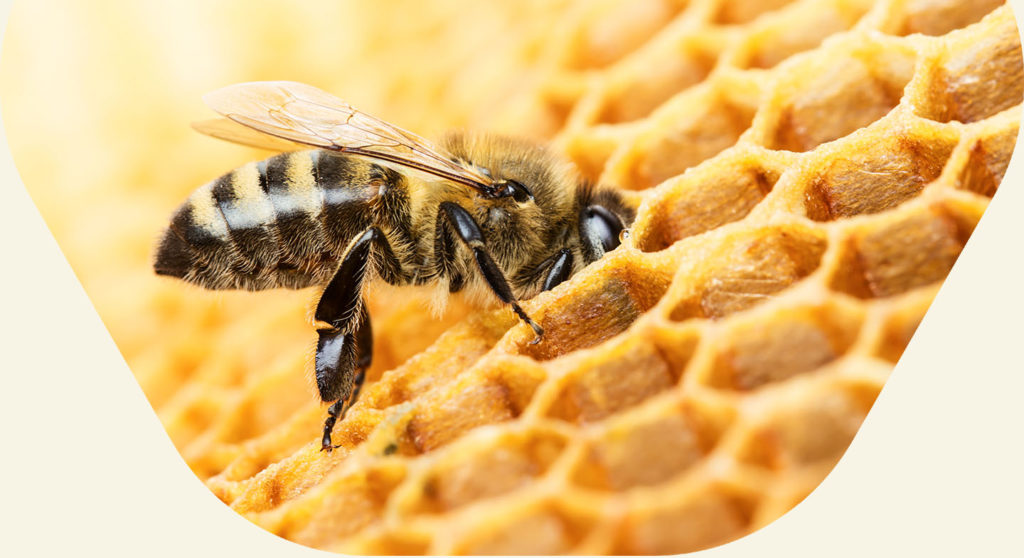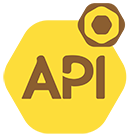API of the Month
Mathieu Domecq
Editor-in-chief of the API blog of the month
March is the sign of a new start for beekeepers. With temperatures rising in the south of France, it’s time to take a look at the brood. Together, we’ll look at the right habits to prepare your hive in the best possible way.
Did you know that although the queen stopped laying in winter, she’s gradually starting up again and will be laying almost 2,000 eggs a day now?
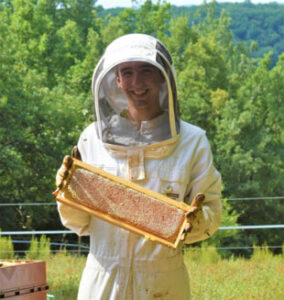
This month’s work
This month, observation is required. Beekeepers will be able to check the condition of their beehives after winter. To do so, they must wait for temperatures above 16°C and no humidity. We have to do a sort of ‘inventory of the beehive’: How many brood frames are there? How many honey frames? How many pollen frames?
A beehive will be strong if it consists of at least 3 to 4 brood frames (eggs, larvae, nymphs) by mid-March. The population will change very quickly by April when there’ll be a sign of the first honey with the fruit trees and rapeseed.
Otherwise, a beehive must be monitored if it contains less of a brood and few reserves. Adding Apiinvert® syrup will strengthen the reserves by making up the honey until the blooms come out in your area. The queen will start laying more and more.
In the south we often achieve great hives with 7 or 8 brood frames by the beginning of April. Then, you have to monitor the risk of swarming!
In slightly cooler regions, March may be a critical time with high sugar consumption. In this case, one more kilo of Apifonda® should suffice.
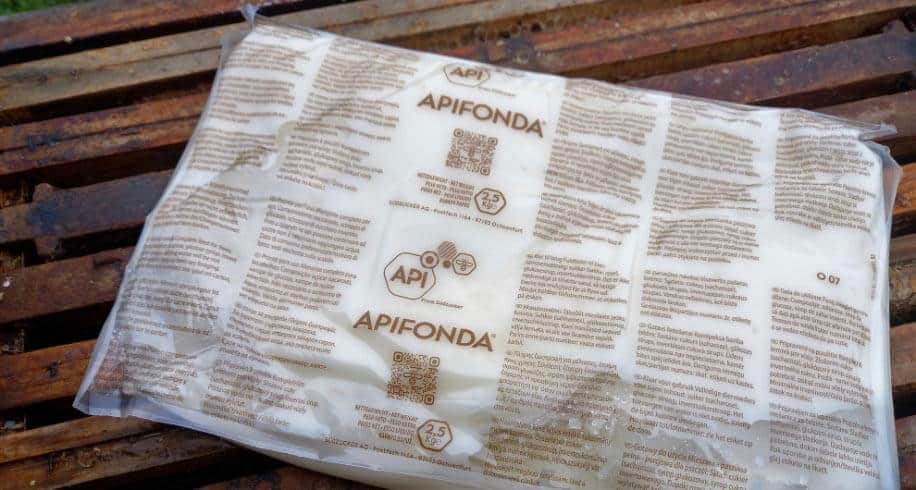
Beekeepers who are experienced observers will be able to gauge the number of eggs laid by the queen by sight. This will give you an indication of the coverage of this brood in 20 days. You’ll have foragers in 40 days, which you’ll need to feed. By definition, it’s then important to ensure that there are enough flower resources around the beehive at that time.
This is what the beekeeping work in March will be all about. Those who are more experienced can place the first super towards the end of the month, when the rapeseed starts to flower, which is present in large quantities in very agricultural areas.
The laying cycle
The brood is a crucial indicator of a beehive’s health. The quality of the brood can be seen based on several criteria: regularity (laying frequency), shape (compact) and abundance.
- Regularity: this is characterised by the presence of eggs, larvae or nymphs occupying all the alveoli in the shape of concentric areas in the same stage.
- Shape: most often it’s elliptical (oval).
- Abundance: this is a sign of the power of the colony in spring, measured by the number of frames occupied.
When healthy, the brood is compact. All the eggs laid develop normally to result in a nice, capped frame. The queen will lay in the shape of a snail. This means that she will start at the centre of the hive then widen her laying pattern outwards, then return.
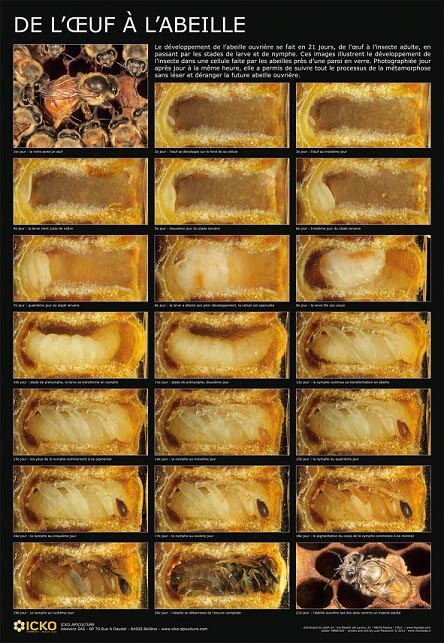
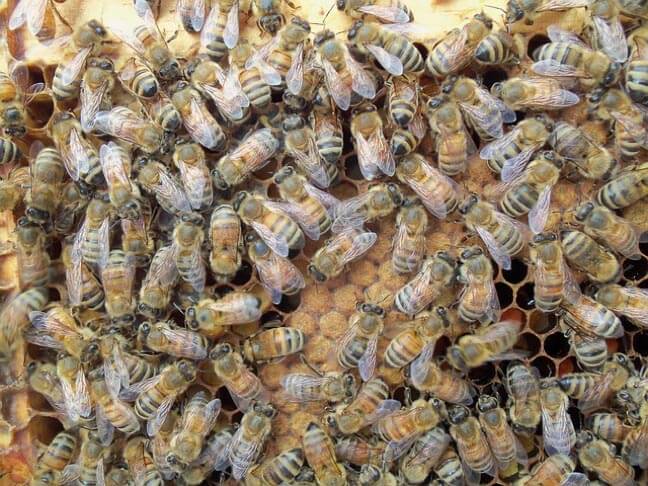
However, be careful if you feed the beehive too much syrup: the queen will be blocked due to lack of space and there won’t be enough empty alveoli anymore. This is called a laying blockage. Naturally, this blockage can also occur when there is a good amount of honey. The bees will store the nectar in the middle of the brood, where the nymphs have just come out. You’ll then need to be vigilant, particularly at the end of March/beginning of April, in order to place the super at the right time.
Rules for starting out in beekeeping
We’ll remind you of the legal rules for setting up your hive. In March, many new beginners will be starting out.
Set up your beehive on a flat surface that is well exposed to the rising sun and protected from the wind, such as at the edge of a wood with the flight board facing east/south-east (towards the sunrise) so that the colony can start as soon as possible.
You must ensure that there is a water source close to the beehive (ideally around 100 m from the beehive). This can be natural or artificial.
It’s also compulsory to signpost the beehive! You must install an “attention abeilles” [beware: bees] sign with your beekeeper number (the NAPI) shown on it. Alternatively, you can mark at least 10% of the beehives with a hot stamp.
A safe distance must be maintained from people. To establish this, refer to the rural code (Art. 206 and 207, Chapter II) or enquire at your town hall. These measurements take into account the distance between the road and dwellings and your hives. In general, these distances are:
– 20 metres from the road
– 20 metres from neighbouring dwellings
– 100 metres from public establishments
These distances can be ignored if a fence (plant, wood or wall) surrounds your beehive 2 metres away on either side and is 2 metres high.
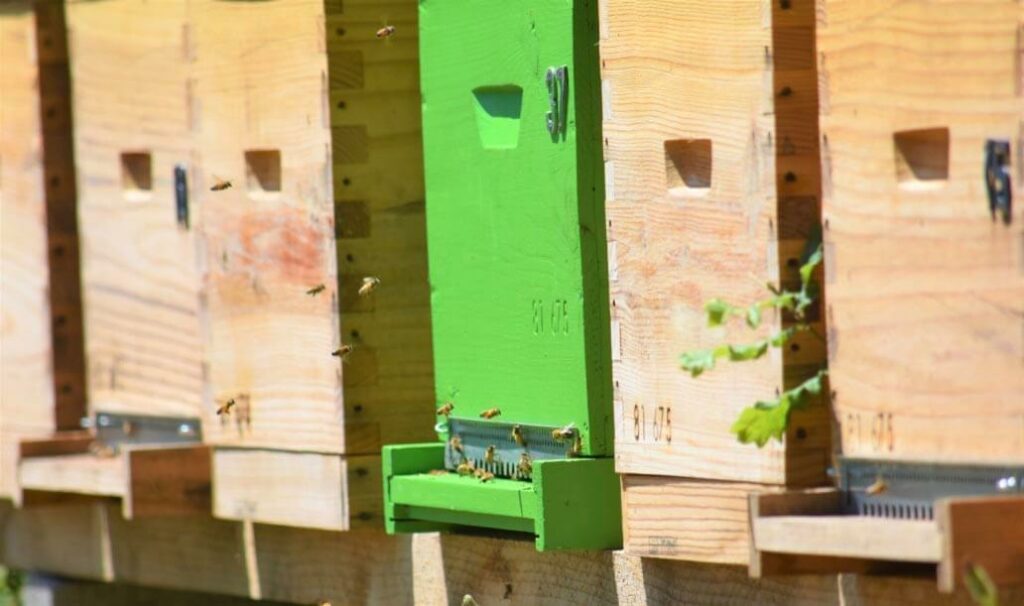
There are new vocations in beekeeping every year, so if you’re starting out, make sure you do training or work experience. That’s my advice. You’ll be able to find training opportunities at apiary schools in each geographical department or with beekeepers, often in smaller learning groups. Join us with API!
As usual, share your photos with us. They will be posted on our website from social media using the hashtag: #apifonda #apiinvert!
We’ll be back next month on your API blog with your faithful partner, Les Ruchers De Mathieu!
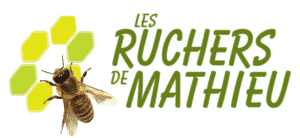
LES RUCHERS DE MATHIEU
Honey & Beekeeping Shop
Photos ©lesruchersdemathieu
